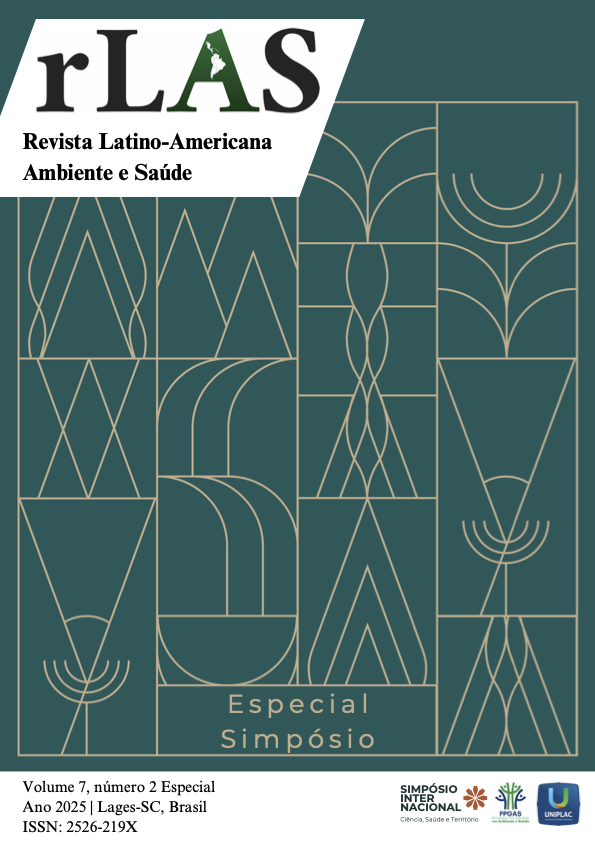Fenofibrate for preventing progression of diabetic retinopathy: a systematic review
uma revisão sistemática
Keywords:
fenofibrate, diabetic retinopathyAbstract
Diabetic retinopathy (DR) is a microvascular complication of diabetes mellitus (DM) associated with marked apoptosis of retinal capillary cells, which can progress to partial to total vision loss, negatively impacting the quality of life of a person living with diabetes. More advanced stages of the disease often require high-cost interventions, such as retinal laser and intravitreal injections, which do not always guarantee satisfactory results. In this context, the present study aims to systematically review the clinical benefit of fenofibrate in patients with DR. The articles were selected from the PubMed database with the descriptors: [(fenofibrate) AND (“diabetic retinopathy”)], between 2010 and May 2025, fully available and free of charge and within the study categories: “clinical trial”, “meta-analysis” and “randomized clinical trial”. The articles demonstrate the benefit of fenofibrate use in reducing the progression of DR, highlighting evidence converging with the study "Fenofibrate Intervention and Event Lowering in Diabetes" (FIELD), the first study to demonstrate an association between fenofibrate use and prevention of invasive treatment for DR. The beneficial effects are mainly in mild to moderate DR and individuals with low haptoglobin (HP), requiring continuous treatment to maintain its effect.
References
ACCORD STUDY GROUP AND ACCORD EYE STUDY GROUP. Effects of medical therapies on retinopathy progression in type 2 diabetes. New England Journal of Medicine, v. 363, n. 3, p. 233-244, 2010. Disponível em: https://pmc.ncbi.nlm.nih.gov/articles/pmid/20587587/. Acesso em: 18 de maio de 2025.
ACTION TO CONTROL CARDIOVASCULAR RISK IN DIABETES FOLLOW-ON (ACCORDION) EYE STUDY GROUP AND THE ACTION TO CONTROL CARDIOVASCULAR RISK IN DIABETES FOLLOW-ON (ACCORDION) STUDY GROUP. Persistent effects of intensive glycemic control on retinopathy in type 2 diabetes in the action to control cardiovascular risk in diabetes (ACCORD) follow-on study. Diabetes Care, v. 39, n. 7, p. 1089-1100, 2016. Disponível em: https://pmc.ncbi.nlm.nih.gov/articles/pmid/27289122/. Acesso em: 18 de maio de 2025.
CHEW, Emily. Y. et al. he effects of medical management on the progression of diabetic retinopathy in persons with type 2 diabetes: the Action to Control Cardiovascular Risk in Diabetes (ACCORD) Eye Study. Ophthalmology, v. 121, n. 12, p. 2443-2451, 2014. Disponível em: https://linkinghub.elsevier.com/retrieve/pii/S0161-6420(14)00623-X. Acesso em: 18 de maio de 2025.
ONG, Kwok Leung et al. Relationship of haptoglobin phenotype and levels with sight-threatening diabetic retinopathy in type 2 diabetes: A Fenofibrate Intervention and Event Lowering in diabetes (FIELD) substudy. Diabetes Research and Clinical Practice, v. 222, p. 112080, 2025. Disponível em: https://linkinghub.elsevier.com/retrieve/pii/S0168-8227(25)00094-4. Acesso em: 18 de maio de 2025.
PREISS, David et al. Effect of fenofibrate on progression of diabetic retinopathy. NEJM evidence, 2024. Disponível em: https://pmc.ncbi.nlm.nih.gov/articles/pmid/38905569/. Acesso em: 18 de maio de 2025.
SRINIVASAN, Srilakshmi et al. Efficiency of fenofibrate in facilitating the reduction of central macular thickness in diabetic macular edema. Indian Journal of Ophthalmology, v. 66, n. 1, p. 98-105, 2018. Disponível em: https://pmc.ncbi.nlm.nih.gov/articles/pmid/29283132/. Acesso em: 18 de maio de 2025.
ZAYED, Mohammed G. et al. Diabetic retinopathy and quality of life: a systematic review and meta-analysis. JAMA ophthalmology, v. 142, n. 3, p. 199-207, 2024. Disponível em: https://pmc.ncbi.nlm.nih.gov/articles/pmid/38300578/. Acesso em: 18 de maio de 2025.
ZHOU, Yue et al. Relationship between dyslipidemia and diabetic retinopathy. Medicine, v. 97, n. 36, p. e12283, 2018. Disponível em: https://pmc.ncbi.nlm.nih.gov/articles/pmid/30200172/. Acesso em: 18 de maio de 2025.


